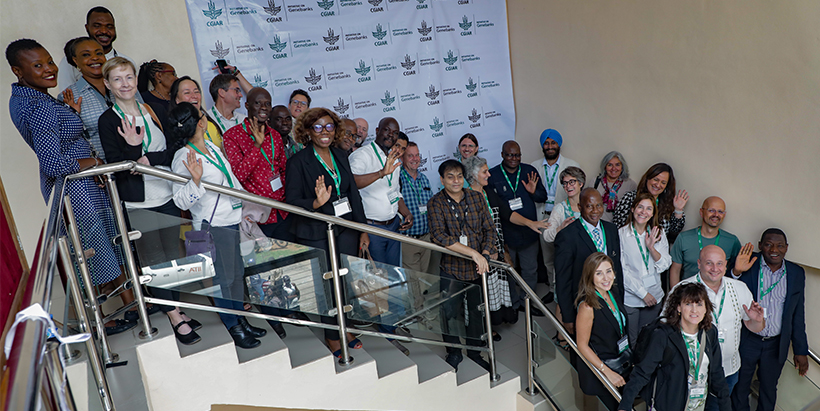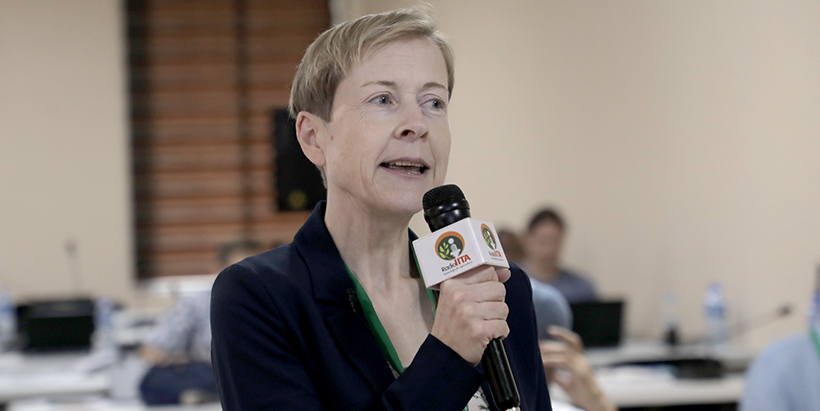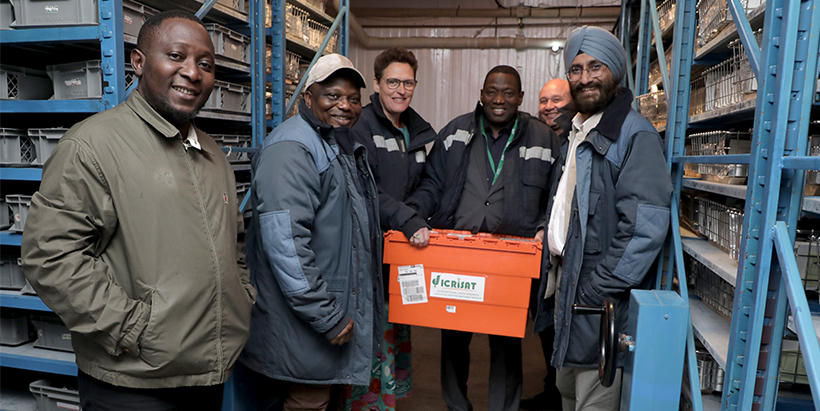28 October 2022
During its annual general meeting in IITA, Ibadan, from 11 to 15 October, the CGIAR Genebank Initiative agreed to engage more with farmers, understand their needs, and prioritize their preferences instead of imposing collections on them. The meeting, attended by CGIAR genebank managers, CGIAR partner initiatives, and partners from the National Agricultural Research systems (NARS), focused on strengthening cohesion among CGIAR centers and promoting accelerated breeding and other genetic innovation initiatives.
 Participants at the CGIAR Genebank Initiative AGM.
Participants at the CGIAR Genebank Initiative AGM.
Global Director for Genetic Innovation Sonja Vermeulen highlighted recent updates, including the NARS-CGIAR breeding network for Africa, partnership with national genebanks, and the CGIAR-Crop Trust partnership meeting to be held later in the year.
The International Center for Agriculture in the Dry Areas (ICARDA) Genebank Manager in Lebanon and Initiative lead for the genebanks, Dr Mariana Yazbek, introduced the structure and priority of the genebank initiative to national partners and stated that the annual general meeting aimed to connect CGIAR with stakeholders and national partners.
“We opted to have this meeting in Nigeria to communicate closely and strengthen collaboration with our national partners from Africa. We will have presentations from other initiatives within the CGIAR and our national partners and discuss our plans,” she said.
The five-day meeting featured presentations from breeders and national partners from Mauritius, Nigeria, Togo, Zambia, and Zimbabwe on their activities, priorities, needs, and areas of possible collaboration with the Initiative.
 Aarhus University Senior Scientist and Work Package 2 co-Lead, Dr Fiona Hay, addressing the AGM.
Aarhus University Senior Scientist and Work Package 2 co-Lead, Dr Fiona Hay, addressing the AGM.
Executive Director of the Forum for Agricultural Research in Africa (FARA), Dr Yemi Akinbamijo, presenting on African Food Systems, stated that the network between research institutions like CGIAR and FARA and national partners is crucial for Africa’s food systems and the world at large.
There were also in-depth presentations and discussions around the Initiative’s work packages—operations, capacity building, cryo-preservation, research, and optimization.
Some participants expressed delight at the first post-COVID convergence, as the AGM allowed them to liaise and share ideas around the Initiative’s current and subsequent work plans.
“It has been good hearing from the other initiatives, and it will be really good for concrete areas of collaboration with some of the partners present to be identified. It will be a great output,” said Aarhus University Senior Scientist and Work Package 2 co-Lead, Dr Fiona Hay.
According to Charlotte Lusty, Senior Director, CGIAR Genebanks, the meeting will further strengthen the network of genebank managers alongside the focus on partnership with national genebanks and national agricultural research programs.
“We really want to be able to reach out and make sure people know what is available in the genebanks, how they can ask for it, and how we can help them,” she said.
IITA West Africa Hub Director and Head of IITA Genetic Resources Center, Michael Abberton, who also co-leads the Initiative, explained that the team is working with the Accelerated Breeding Initiative. “There are active collaborations within the genebanks and the Accelerated Breeding Initiative. We hope to develop those further so that the appropriate deployment of germplasm from the genebanks within breeding is enhanced,” he stated.
The AGM also focused on updates, challenges facing the genebanks, and discussions on incorporating inputs and feedback from the national partners.
 Some of the AGM participants during a tour of the IITA Genebank
Some of the AGM participants during a tour of the IITA Genebank
.
Participants also visited the genebank facility of the National Center for Genetic Resources and Biotechnology (NACGRAB), Moor Plantation, in Ibadan. The visit, influenced by the collaboration of NACGRAB and Crop Trust, involved a detailed tour of the facility and its accessions, allowing for further discussions between the collaborators on the support required to improve the productivity of the genebank.